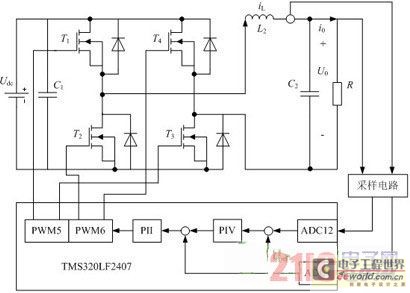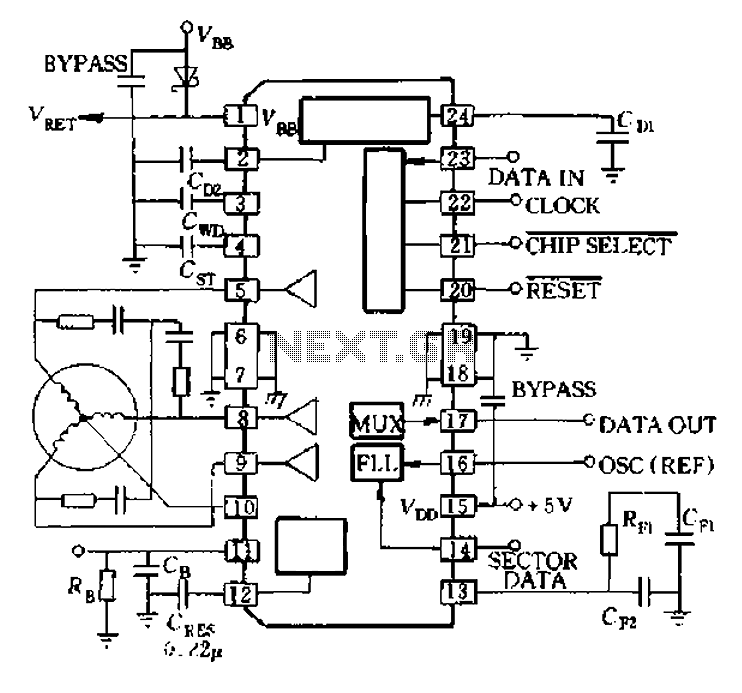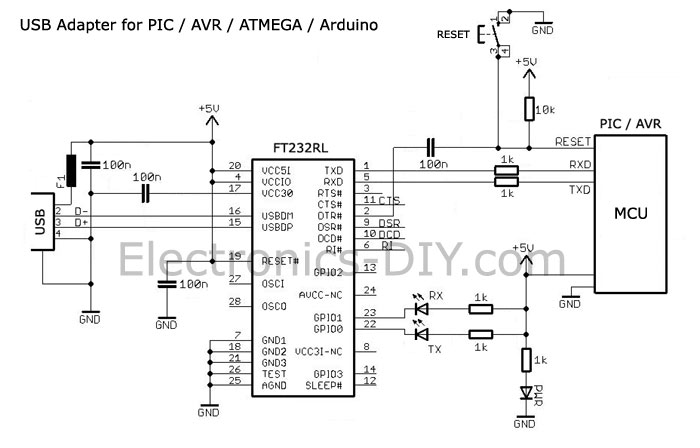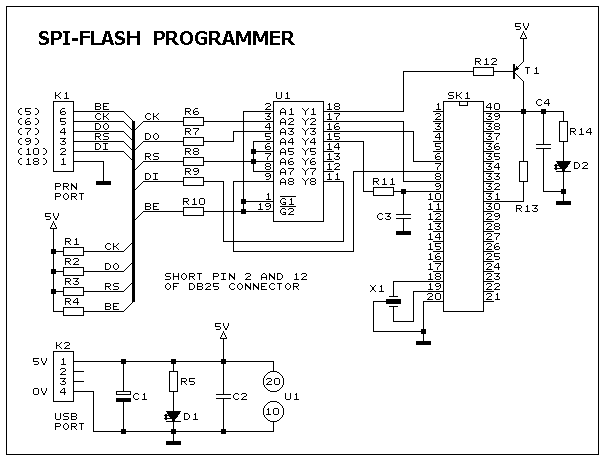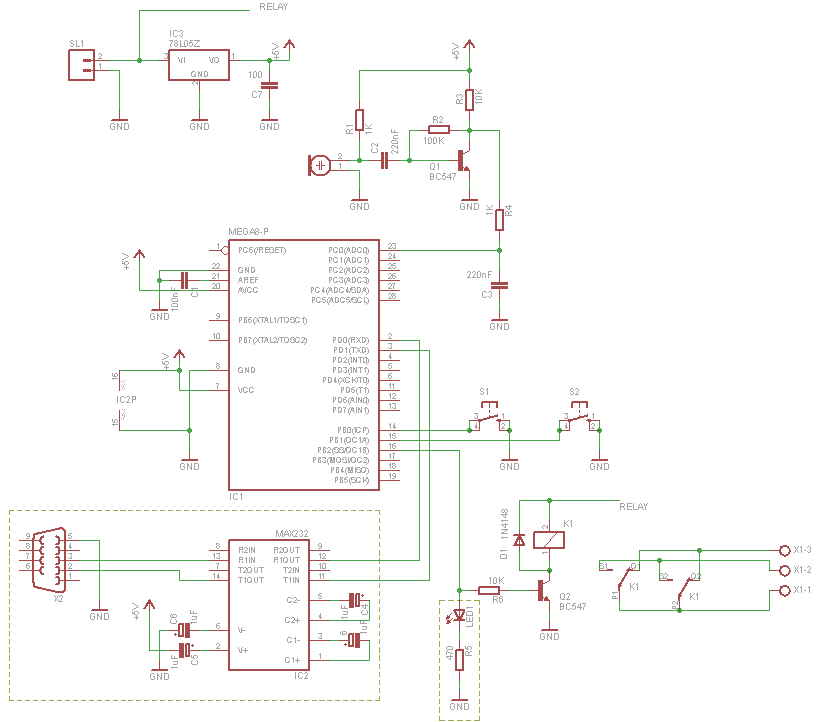
Microchip PIC Programmer
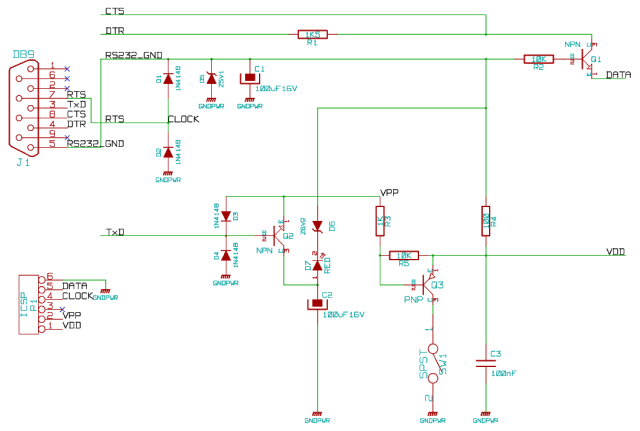
This circuit is capable of programming any Microchip processor ranging from 6 pins to 40 pins. The programmer is compatible with the PIC12, PIC16, PIC18, dsPIC24, and dsPIC30 families, utilizing an ICSP header which eliminates the need to remove the PIC from the circuit for each programming session.
This programming circuit is designed to facilitate the development and debugging of Microchip's various processor families. The circuit employs an In-Circuit Serial Programming (ICSP) interface, which allows programming and debugging while the microcontroller remains soldered onto the PCB. This feature significantly enhances convenience and efficiency, especially in iterative development processes.
The circuit typically includes a microcontroller programmer, a connection interface, and a power supply circuit. The programmer interfaces with the target microcontroller through the ICSP header, which consists of at least five pins: MCLR (Master Clear), Vpp (Programming Voltage), Vdd (Supply Voltage), Vss (Ground), and Data (Serial Data Line). Depending on the specific microcontroller model, additional pins may be utilized for programming and debugging purposes.
The programmer's design must ensure that it can supply the necessary programming voltage levels and current requirements as specified in the datasheets of the target microcontrollers. It is essential to include appropriate resistors and capacitors in the circuit to stabilize the signals and protect against voltage spikes that may occur during programming.
In addition to the physical connections, software support is crucial for the operation of the programmer. The programming software must be compatible with the intended processor families and should provide a user-friendly interface for uploading firmware, verifying memory, and debugging code.
Overall, the circuit serves as a versatile tool for developers working with Microchip processors, streamlining the programming process and enhancing productivity in embedded system design.This circuit can program any MicroChip processor from 6 pins to 40 pins processors. The programmer supports: PIC12, PIC16, PIC18, dsPIC24, dsPIC30 families, and uses an ICSP header thus not requireing to remove the PIC from the circuit each time it needs to be programmed. 🔗 External reference
This programming circuit is designed to facilitate the development and debugging of Microchip's various processor families. The circuit employs an In-Circuit Serial Programming (ICSP) interface, which allows programming and debugging while the microcontroller remains soldered onto the PCB. This feature significantly enhances convenience and efficiency, especially in iterative development processes.
The circuit typically includes a microcontroller programmer, a connection interface, and a power supply circuit. The programmer interfaces with the target microcontroller through the ICSP header, which consists of at least five pins: MCLR (Master Clear), Vpp (Programming Voltage), Vdd (Supply Voltage), Vss (Ground), and Data (Serial Data Line). Depending on the specific microcontroller model, additional pins may be utilized for programming and debugging purposes.
The programmer's design must ensure that it can supply the necessary programming voltage levels and current requirements as specified in the datasheets of the target microcontrollers. It is essential to include appropriate resistors and capacitors in the circuit to stabilize the signals and protect against voltage spikes that may occur during programming.
In addition to the physical connections, software support is crucial for the operation of the programmer. The programming software must be compatible with the intended processor families and should provide a user-friendly interface for uploading firmware, verifying memory, and debugging code.
Overall, the circuit serves as a versatile tool for developers working with Microchip processors, streamlining the programming process and enhancing productivity in embedded system design.This circuit can program any MicroChip processor from 6 pins to 40 pins processors. The programmer supports: PIC12, PIC16, PIC18, dsPIC24, dsPIC30 families, and uses an ICSP header thus not requireing to remove the PIC from the circuit each time it needs to be programmed. 🔗 External reference
